-
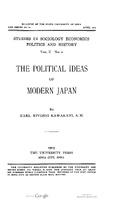
The Political Ideas of Modern Japan was based on Kawakami's master’s thesis. Kawakami writes about the development of modern political ideas in Japan, an underrepresented field at the time. The economic growth of Japan was starting to be studied. He situates the current political ideas of Japan, in the context of Japanese history, interactions with the West, influences of China on Japan and characteristics of the Japan as a nation. He is highly influenced by Rousseau and modern European political theory in his analysis.
-

President Theodore Roosevelt brokered a diplomatic agreement wherein the Japanese government took responsibility for restricting immigration, especially that of laborers. Japanese immigration had recently risen, in part as a response to the decrease in Chinese labor after Chinese immigration was limited by the Chinese Exclusion Act of 1882. However, Californians were not pleased by this. Roosevelt did not wish to openly offend Japan which was rising as a world power and thus the Gentleman's agreement was brokered. This agreement did not come out publically until 1924.
-
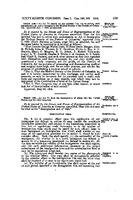
The 1924 Immigration Act extended the "national origins" quota system, initially established in the 1921 Emergency Quota Act. The quota system severely limited immigration, capping it at 150,000 a year. It barred "aliens ineligible for citizenship" altogether. As all other Asian countries had been explicitly banned through previous legislation it only offically applied to the Japanese. The Quota System was the primary means of deterring immigration until 1965, and was used to shape immigration around a favored population.
-
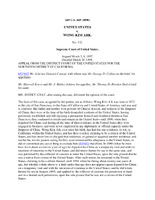
Wong Kim Ark was a Chinese American born in 1873 in San Francisco, California. His parents were subjects of the Emperor of China residing in America. Wong Kim traveled regularly to China to visit family and upon his return from a trip in 1895 was barred from reentry. Wong Kim asserted his right to entry as a US citizen which was challenged by the Immigration Bureau, which assumed that no Chinese person could hold US citizenship. The Supreme Court ruled that the 14th amendment granted birthright citizenship to anyone born in the United States regardless of race or parental status.
-
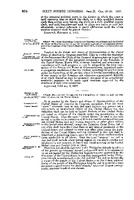
The Immigration Act of 1917 created a "barred zone" from the Middle East to Southeast Asia from which no immigrants were allowed to enter the USA. It also enacted a literacy test to restrict immigration (primarily from European countries). The act also expanded excluded classes of immigrants, including "idiots, imbeciles, feeble-minded persons, epileptics, insane persons: persons who have had one or more attacks of insanity at any time previously; persons of constitutional psychopathic inferiority; persons with chronic alcoholism; paupers...persons afflicted with tuberculosis in any form or with a loathsome or dangerous contagious disease; persons...mentally or physically defective...persons who have been convicted of or admit having committed a felony or other crime or misdemeanor involving moral turpitude; polygamists...anarchists... prostitutes...persons who directly or indirectly procure or attempt to procure or import prostitutes...contract laborers...persons likely to become a public charge; persons who have been deported under any of the provisions of the act...persons whose tickets or passage is paid for with the money of another...stowaways..."
-
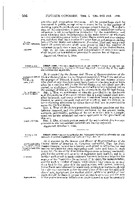
The Scott Act of 1888 extended domestic authority over immigration. It abolished "returning laborer" exempt status (previously included under the 1882 Chinese Exclusion Act.)
This stipulation would leave over 20,000 Chinese holding Certificate of Return stranded outside of the USA.
-
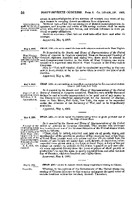
The Chinese Exclusion Act of 1882 denied Chinese laborers (skilled, unskilled, and employed in mining) entry to the United States for 10 years. The only Chinese that could enter were merchants, diplomats, students, tourists, and returning laborers. It stated that no federal or State court in the US would admit Chinese to citizenship, and repealed any previously conflicting laws.
-

The Naturalization Act of 1870 created a system of controls for the naturalization process. It explicitly extended naturalization rights to "aliens of African descent" while denying rights to all other non-white immigrant groups, particularly Asians.
-
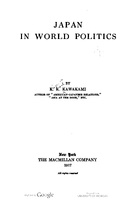
Japan in World Politics was published in 1919. Most of the chapters were originally published in North American Review, the Atlantic Monthly, the Century Magazine, the American Review of Reviews, the Forum, the New York Evening Post, and Pearson's Magazine. They were compiled and edited for this volume. The writings address Japan’s relationship with America, Korea, China, Russia, England, Mexico, and Germany.
-
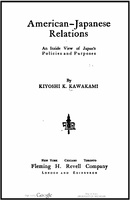
American-Japanese Relations: An Inside View of Japan's Policies and Purposes is about the relationship between America and Japan and what Kawakami perceives as three major misunderstandings between the countries, those are Japanese military ambitions in Manchuria and Korea, and the sentiment against Japanese Americans on the West Coast. He argues that America should not be threatened by Japan and that they are uniquely similar and should have a good relationship.
-
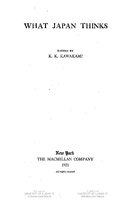
Available Online through Hathi Trust
Table of Contents:
A world unsafe for democracy, by Isoh Yamagata.--The Monroe doctrine and the League of nations, by Rikitaro Fujisawa.--Mikadoism, by R. Oda.--Japan's defective constitutional government, by Yukio Ozaki.--Liberalism in Japan, by Sakuzo Yoshino.-Japan's navalism, by Tetsutaro Sato.--Militarism and navalism in America, by Henry Satoh.--Harmony between East and West, by Takashi Hara.--The war's effect upon the Japanese mind, by Masaharu Anessaki.--Illusions of the white race, by Marquis Okuma.--The "white" problem in Asia, by an anonymous writer.--The Japanese question in America, by Shimpei Goto.--Can Japan be Christianized? By M. Zumoto.--Appendix: The Yap controversy.
-

The Geary Act of 1892 extended the 1882 Chinese Exclusion Act by 10 years. It expanded the federal government's powers to enforce immigration laws. It required Chinese people in the US to carry a Certificate of Residence (precursor to a green card) to prove they had legally entered the country. Chinese Residents already in US were required to obtain certificates. If they were found without the certificate they would be liable to detention and deportation.
-

-
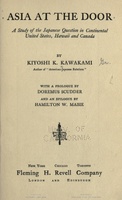
In Asia at the Door Kawakami addresses the Alien Land Act and argues for Japanese being able to become Americans. In doing so he does implicate Chinese as "less able" to be citizens. He especially addresses the anti-Asian sentiment in California and is basically arguing that the 'deep friendship" between Japan and America and Japanese unique cultural markers make them especially suitable for becoming American.
-

Photo of Dilara Caliskan
-
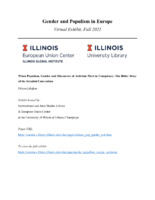
cover page and paper by Dilara Caliskan
-
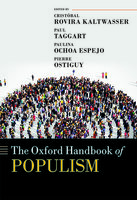
Publisher's description:
Populist forces are becoming increasingly relevant across the world, and studies on populism have entered the mainstream of the political science discipline. However, so far no book has synthesized the ongoing debate on how to study the populist phenomenon. This handbook provides state of the art research and scholarship on populism, and lays out, not only the cumulated knowledge on populism, but also the ongoing discussions and research gaps on this topic.
-
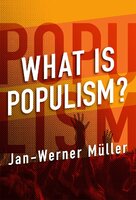
Publisher's description:
Donald Trump, Silvio Berlusconi, Marine Le Pen, Hugo Chávez—populists are on the rise across the globe. But what exactly is populism? Should everyone who criticizes Wall Street or Washington be called a populist? What precisely is the difference between right-wing and left-wing populism? Does populism bring government closer to the people or is it a threat to democracy? Who are "the people" anyway and who can speak in their name? These questions have never been more pressing.
In this groundbreaking volume, Jan-Werner Müller argues that at populism's core is a rejection of pluralism. Populists will always claim that they and they alone represent the people and their true interests. Müller also shows that, contrary to conventional wisdom, populists can govern on the basis of their claim to exclusive moral representation of the people: if populists have enough power, they will end up creating an authoritarian state that excludes all those not considered part of the proper "people." The book proposes a number of concrete strategies for how liberal democrats should best deal with populists and, in particular, how to counter their claims to speak exclusively for "the silent majority" or "the real people."
Analytical, accessible, and provocative, What Is Populism? is grounded in history and draws on examples from Latin America, Europe, and the United States to define the characteristics of populism and the deeper causes of its electoral successes in our time.
-
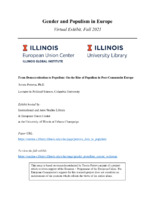
cover page and paper by Tsveta Petrova
-

cover page and paper by Matteo Pasetti
-
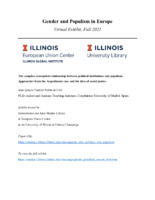
cover page and paper by Juan Ignacio
-

Photo of Matteo Pasetti
-

Photo of Tsveta Petrova
-

Photo of Juan Ignacio
-

Publisher's description:
Whether or not Haider has followed the ideological path of his compatriot Adolf Hitler, says Austrian political historian Höbelt, he has certainly followed his route to publicity around the world. He explores the politics of modern Austria, and debunks the myth that Haider is driven by passion rather than self-interest.
























